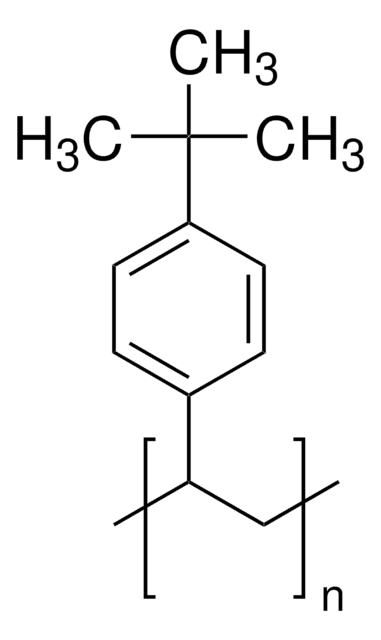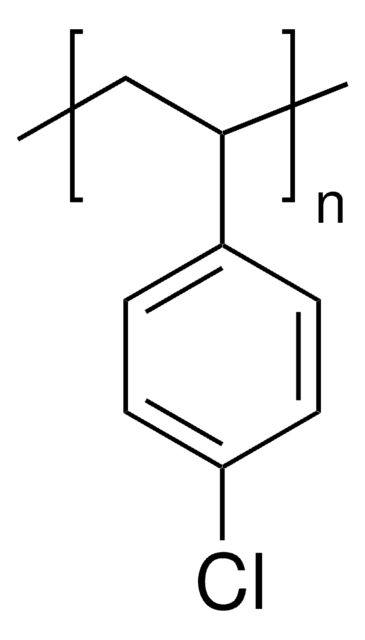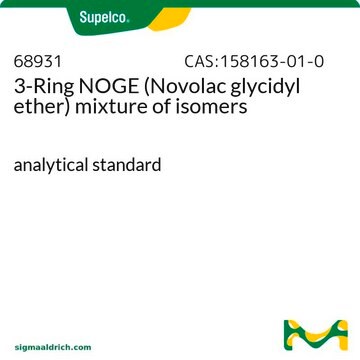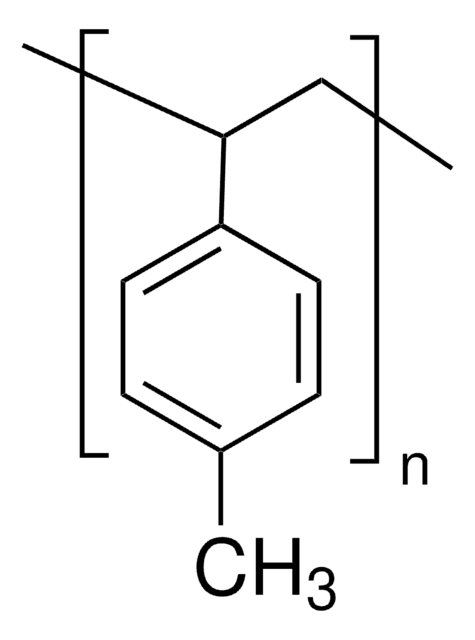436224
Poly(4-vinylphenol)
average Mw ~25,000
Synonym(s):
PVP, Poly(4-hydroxystyrene)
About This Item
Recommended Products
description
intrinsic viscosity parameters α=0.50, k=9.71 × 10-4 dL/g 25°C, in THF
form
powder
mol wt
average Mw ~25,000
greener alternative product characteristics
Design for Energy Efficiency
Learn more about the Principles of Green Chemistry.
sustainability
Greener Alternative Product
intrinsic viscosity
(α=0.50, k=9.71 × 10-4)
mp
360 °C (dec.)
transition temp
Tg 130-185 °C
solubility
alcohols, ethers, ketones and esters: soluble
aromatics, petroleum ethers and chlorinated hydrocarbons: insoluble
density
1.16 g/mL at 25 °C (lit.)
greener alternative category
, Enabling
SMILES string
Oc1ccc(C=C)cc1
InChI
1S/C8H10O/c1-2-7-3-5-8(9)6-4-7/h3-6,9H,2H2,1H3
InChI key
HXDOZKJGKXYMEW-UHFFFAOYSA-N
Looking for similar products? Visit Product Comparison Guide
General description
Application
Storage Class Code
11 - Combustible Solids
WGK
WGK 3
Flash Point(F)
Not applicable
Flash Point(C)
Not applicable
Personal Protective Equipment
Certificates of Analysis (COA)
Search for Certificates of Analysis (COA) by entering the products Lot/Batch Number. Lot and Batch Numbers can be found on a product’s label following the words ‘Lot’ or ‘Batch’.
Already Own This Product?
Find documentation for the products that you have recently purchased in the Document Library.
Customers Also Viewed
Articles
Flexible electronic circuits, displays, and sensors based on organic active materials will enable future generations of electronics products that may eventually enter the mainstream electronics market.
Flexible electronic circuits, displays, and sensors based on organic active materials will enable future generations of electronics products that may eventually enter the mainstream electronics market.
Flexible electronic circuits, displays, and sensors based on organic active materials will enable future generations of electronics products that may eventually enter the mainstream electronics market.
Flexible electronic circuits, displays, and sensors based on organic active materials will enable future generations of electronics products that may eventually enter the mainstream electronics market.
Our team of scientists has experience in all areas of research including Life Science, Material Science, Chemical Synthesis, Chromatography, Analytical and many others.
Contact Technical Service













